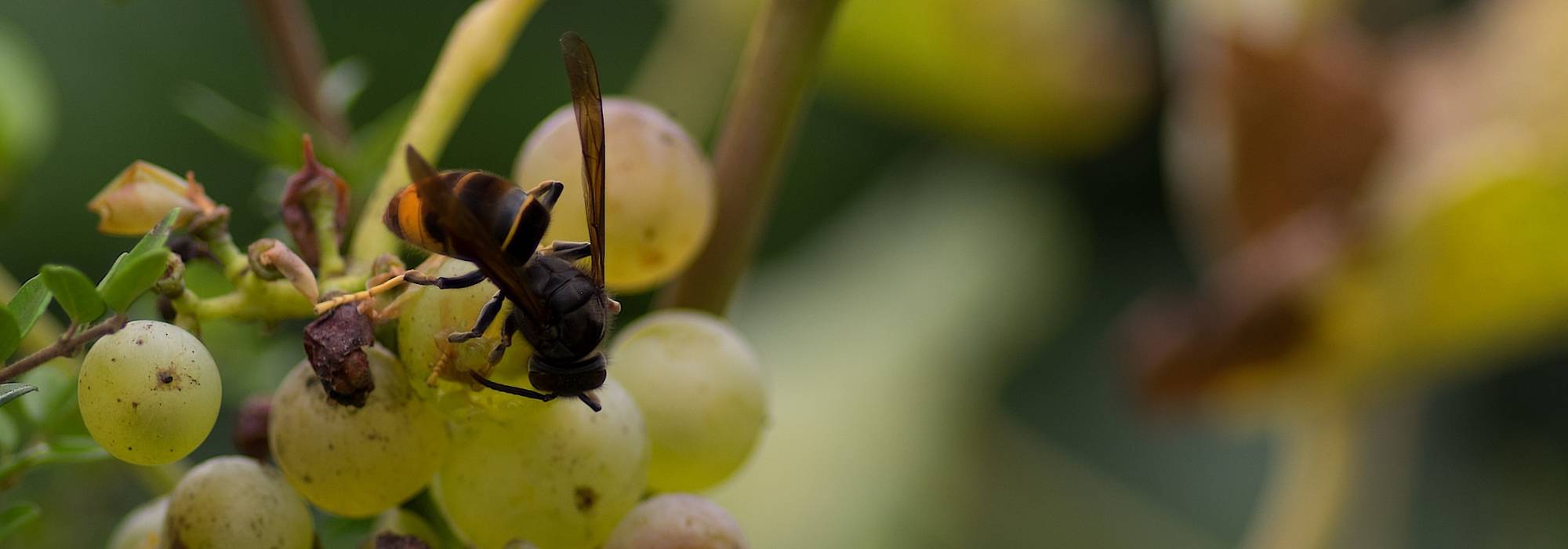
Asian hornet: how to recognise and control it
Everything you need to know about the Asian hornet
Contents
The Asian hornet is frightening, and rightly so. It’s often discussed in the media, online and in conversations around us. But who exactly is it? What does it do? How does it live? Why is it problematic? How can we get rid of it? Let’s take stock of this decidedly unpleasant insect!
Where does it come from, how to recognise it?
Asian hornet, Vespa velutina, or yellow-legged hornet is a hymenopteran of the family Vespidae, the family of wasps. It comes from Asia and was inadvertently introduced into Europe. It quickly became an invasive species slowly spreading northwards in Europe, at a rate of sixty kilometres per year. It is now found in Portugal, Spain, Italy, Germany, France, Belgium and Great Britain.
Do not confuse it with our good old European hornet Vespa crabro : large native insect, friendly and harmless, whatever some may say…
Differences between European hornet and Asian hornet are quite visible :
Asian hornet :
- smaller size in Asian hornet : 2.8 cm for workers.
- an entirely black insect with an orange spot at end of abdomen (A nice spot on its rear!)
- nest made of chewed cellulose, larger, with a lateral entrance and located high in trees
- tips of its legs are yellow
European hornet :
- it is larger : 3 cm for workers and has a sturdier build
- a very colourful insect : black, yellow and reddish-brown.
- its nest, also made of chewed cellulose, is smaller, with an entrance from the underside. It is located in a hollow trunk, on soil or under a shelter.
Read also Asian hornet and European hornet: how to tell them apart?
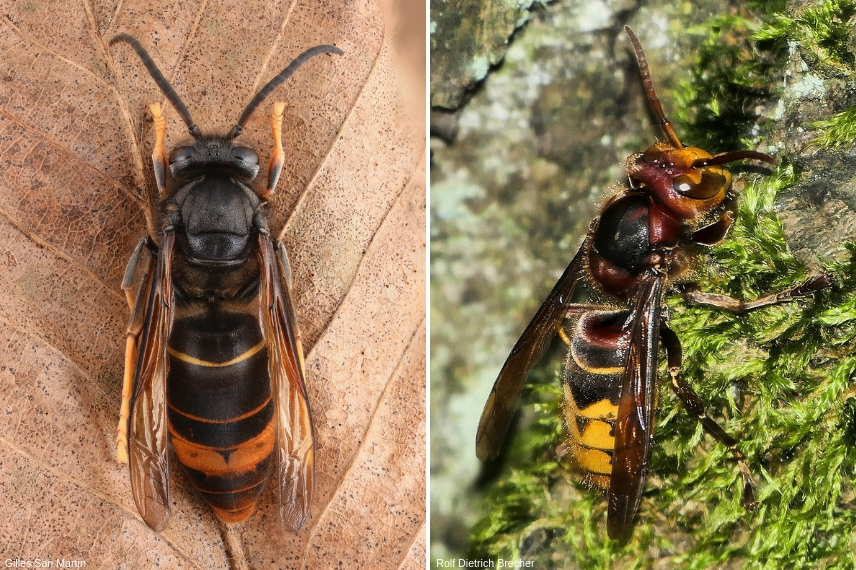
Asian hornet (left) / European hornet (right)
What's the problem with the Asian hornet?
The Asian hornet feeds its young with hymenopterans caught on the wing (but also certain caterpillars such as the box tree moth). It is a terrible predator of our domestic or wild social bees, which it catches by hovering in front of hives. The problem is even more serious in urban medium, where there are no ‘feeding’ alternatives for Asian hornets. Obviously, it is a disaster for beekeepers who lose huge numbers of bees (100,000 bees from a single colony in one year!) and therefore see their honey production fall drastically. But more serious still, we need bees to pollinate flowers. These are already severely harmed by human activity; if the Asian hornet gets involved, we are heading for catastrophe…
Life cycle of the Asian hornet
To better control the Asian hornet, it is important to know its life cycle :
- Autumn and winter
A new foundress, a queen, becomes sexually mature around mid-autumn. She is fertilised by a male before winter within the nest itself. She leaves it, as do her “colleagues”, and seeks a hiding place to overwinter. The old nest is abandoned.
- Spring
The foundress emerges from hibernation as soon as temperatures approach 13°C. She feeds on nectar to regain strength and begins building a nest. She creates one cell a day and lays one egg a day. She starts to feed her larvae, notably with captured bees. The first workers emerge 45 days after egg-laying, which means the foundress remains alone between mid-February and early May, depending on when the first eggs were laid. Once the first workers begin their work, the queen stays at the nest and no longer leaves it. It is therefore only between late February and the very start of May that trapping could be effective, if only all traps used were monospecific… (see below)
- Summer
The colony continues to grow until the emergence of future queens that will in turn found new colonies.
Read also
A Wasp Nest in Your Garden: What to Do?Combating the Asian hornet: nest destruction
The first way to fight the Asian hornet is to systematically destroy all nests — and as early in the season as possible: from mid-July up to November at the latest, that is before nest relocation and emergence of future queens.
Before anything else, you must find it because it is often hidden in tree foliage. Its presence can however be detected by incessant flights of Asian hornets around the tree’s crown.
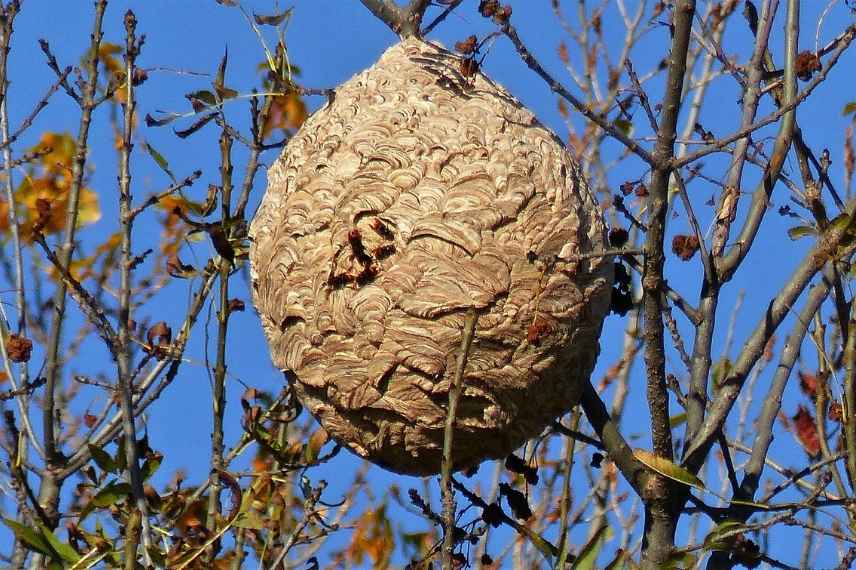
Asian hornet nest
Destruction of the nest must be carried out by approved experts, well equipped and able to recognise the nest and destroy it safely (see links below). If you spot a nest, think of contacting your local town hall: they can point you in the right direction and the cost may even be covered.
Above all, do not deal with them yourself! Indeed, although hornets are relatively calm insects and their sting is not more dangerous or painful than that of a single wasp, multiple stings and sprays of acid from an entire colony can require emergency hospitalisation. Caution is essential. All the more so because Asian hornets are highly aggressive in protecting the nest!
Be careful! One person in fifty is allergic to venom of wasps and bees, which can cause: vomiting, dizziness, hives, breathing difficulties, or even anaphylactic shock. A sting from a hornet, European or Asian, can induce the same symptoms in susceptible people.
please note: nests found in late autumn or winter are no longer dangerous. Only a few founding queens may remain alive but they are numbed by the cold; they are said to be in diapause.
Tackling the Asian hornet: the trap
Trapping Asian hornets is an effective measure. Yes, but not at just any time, nor in just any way…
Indeed, most traps made at home or sold commercially are not species-specific: you risk trapping and therefore killing a bee, a bumblebee, a wasp, or any other insect very useful to the environment and unrelated to Asian hornet.
Moreover, even if you have captured an Asian hornet, it could be dangerous if still alive. It is therefore important to use traps designed for Asian hornet foundresses and to place them between mid-February and early May for them to be effective. These traps use the same baits: beer, honey, syrup, fruit juices… but are designed to let in only Asian hornet foundresses (or at least allow other insects to escape).
To make this type of trap, see Virginie’s illustrated tutorial: “Asian hornet trap: how to build it”
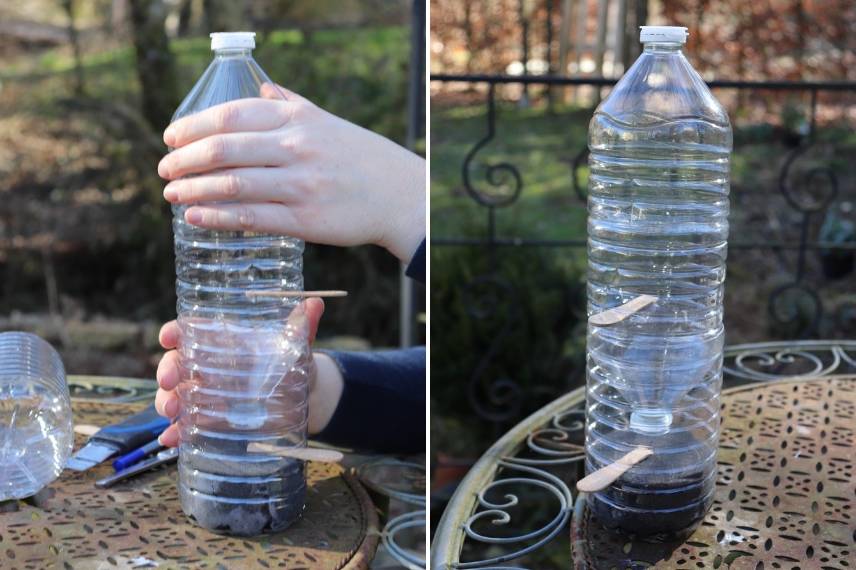
Preventing damage: protecting beehives from predators
- Hive protection
Grids placed at beehive entrances allow only bees to pass and keep Asian hornets out. This does not prevent predation when bees are in flight.
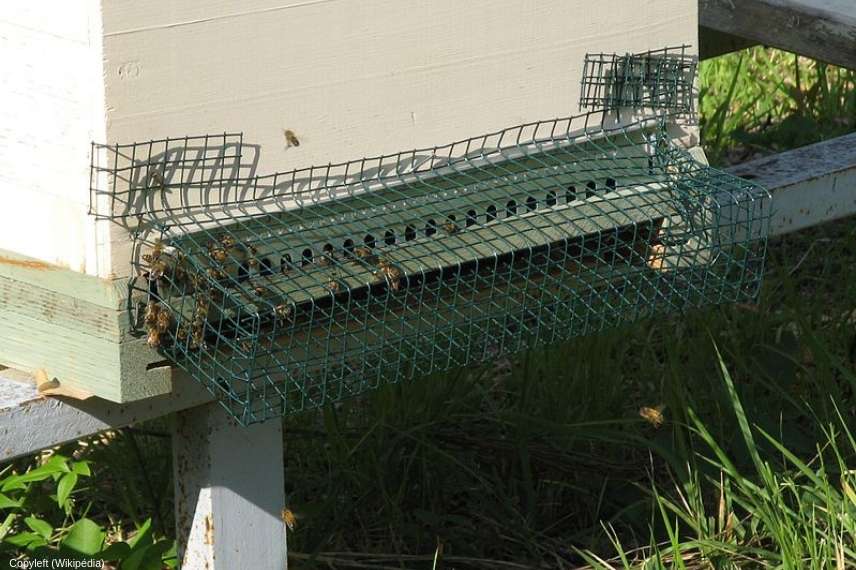
Protection of hives against Asian hornet
- Use of predators
Until recently, it was thought to have no predators, which explained its rapid invasiveness. Fortunately, a raptor that feeds on hymenopterans (and is well known to beekeepers) appears to be an effective predator of the Asian hornet: the honey buzzard.
Another, simpler solution is to let hens roam near hives. Some, notably Janzé hen, are natural predators of Asian hornets.
Recently, a fly has also been discovered that lays its eggs directly in the Asian hornet queen at the end of spring, when the queen is about to build her nest. Unlucky for her (but good news for us and for bees), she is then eaten from the inside by the fly larva before building her nest.
Find out more...
- In France: combating the Asian hornet and recording sightings
- In France: lists of professional nest removers
- In Belgium: focus on the Asian hornet
- In Belgium: Civil Security will handle destruction of Asian hornet nests.
- Subscribe!
- Contents
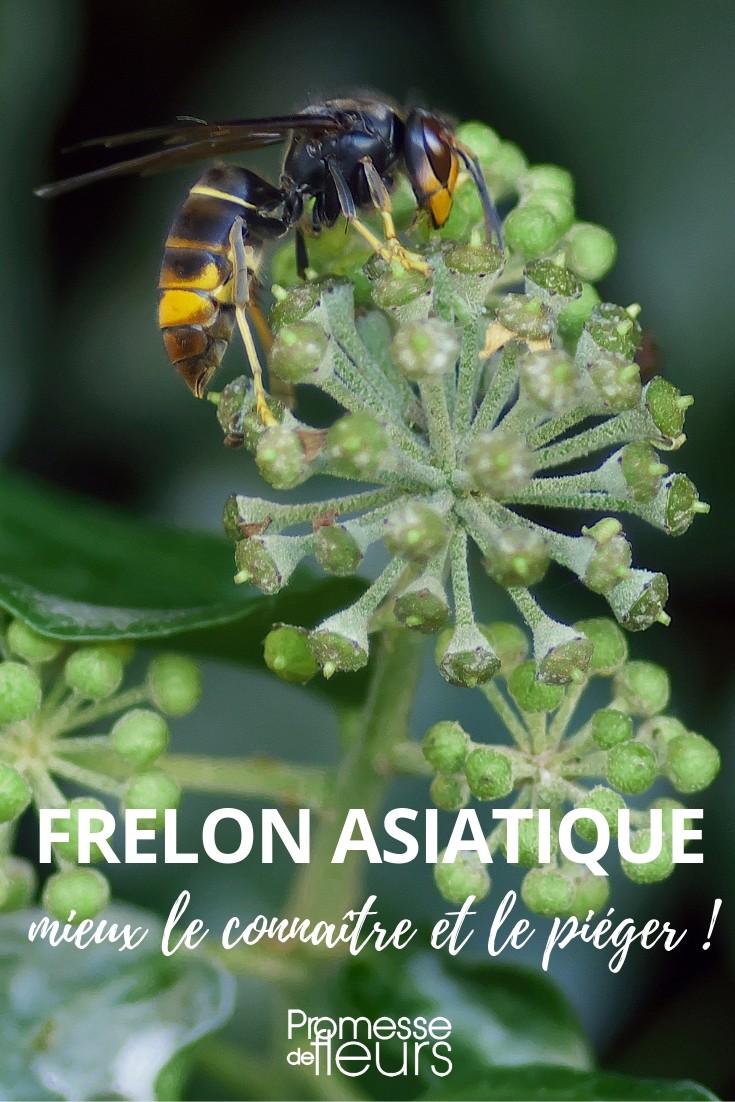































Comments